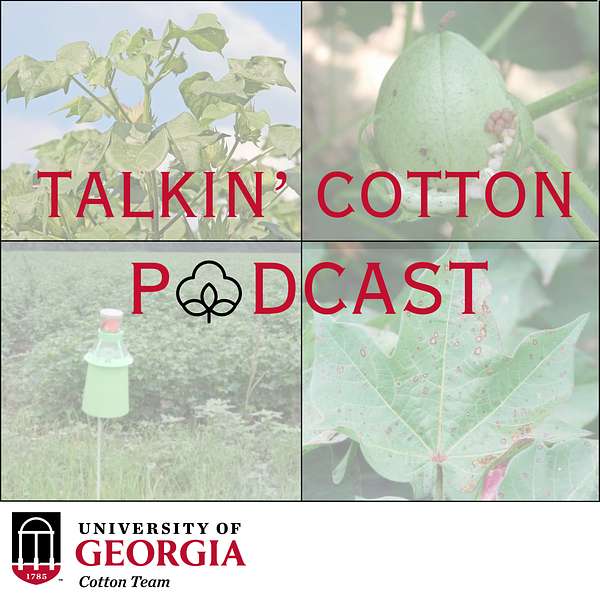
Talkin' Cotton Podcast
Welcome to the UGA Cotton Team's Talkin' Cotton Podcast. This is a podcast for cotton growers, county agents, industry partners and anyone else interested in learning about science-backed cotton production and pest management. Our goal is to educate you with the most up-to-date data and information all season long. Talkin' Cotton will feature guests, such as, extension specialists, research faculty, graduate students, extension agents, industry allies and many others! Let's get into the why's of puttin' on, throwin' off and cuttin' out.
Talkin' Cotton Podcast
Maximizing Cotton Yield: The Drought, Defoliation, and Cover Crop Connection
The cotton crop is moving fast in Georgia this year. With 76% of the crop having open bolls—13% ahead of the five-year average—growers are making critical end-of-season decisions while planning for what comes next.
Drought conditions since Labor Day weekend have created unique irrigation management challenges. The UGA cotton team discusses the surprising discovery that many fields have adequate moisture in shallow soil layers but are bone dry below 12 inches. This deep moisture depletion could impact yields as plants can't access their usual "bank" of water reserves. The team addresses whether irrigating cotton that's already 20-30% open is worthwhile, and when it's simply wasting money. Their practical advice: if you're seeing 60% open bolls, it's time to shut off the water regardless of leaf appearance.
Interestingly, early-planted cotton (April-May) has performed exceptionally well this season. The dry conditions arrived just as these crops were finishing, preventing the boll rot that typically plagues early plantings. Some dryland cotton planted in mid-April is yielding 1500-1600 pounds—a testament to perfect timing between crop development and weather patterns.
The conversation shifts to cover crop planning as harvest approaches. Dr. Singleton explains how cover crops do more than just prevent erosion—they improve water infiltration, suppress weeds, and build organic matter over time. The team discusses how even tiny amounts of soil loss add up dramatically (a 1/32 inch loss across an acre equals five tons of soil), making cover crops a crucial investment despite their upfront cost. They explore options for fitting various cover crop species into tight rotation windows, particularly when following cotton with corn.
The episode concludes with practical advice on defoliating drought-stressed cotton and managing cotton damaged by jassids, emphasizing the importance of timing to avoid stuck leaves and other harvest complications.
Ready to protect your soil, maximize your irrigation efficiency, and set up next season for success? Listen now for research-backed strategies that balance immediate needs with long-term sustainability.

.jpg)